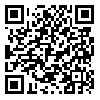
International Journal of Industrial Engineering & Production Research
Iran University of Science & Technology
Wed, Jul 9, 2025
[Archive]
Volume 25, Issue 2 (IIJEPR 2014)
IJIEPR 2014, 25(2): 103-114 |
Back to browse issues page
Download citation:
BibTeX | RIS | EndNote | Medlars | ProCite | Reference Manager | RefWorks
Send citation to:



BibTeX | RIS | EndNote | Medlars | ProCite | Reference Manager | RefWorks
Send citation to:
mohaghar A, Kashef M, Kashef Khanmohammadi E. A novel technique to solve the supplier selection problem: combination of decision making trial and evaluation laboratory and graph theory and matrix approach methods. IJIEPR 2014; 25 (2) :103-114
URL: http://ijiepr.iust.ac.ir/article-1-488-en.html
URL: http://ijiepr.iust.ac.ir/article-1-488-en.html
1- Associate professor, Dept. of management, University of Tehran , amohaghar@ut.ac.ir
2- M.S candidate of Industrial management, Dept. of management, University of Tehran
2- M.S candidate of Industrial management, Dept. of management, University of Tehran
Abstract: (40434 Views)
Considering the major change occurred in business cells from plant to “chain” and the critical need to choose the best partners to form the supply chain for competing in today’s business setting, one of the vital decisions made at the early steps of constructing a business is supplier selection. Given the fact that the early decisions are inherently strategic and therefore hard and costly to change, it’s been a point of consideration for industries to select the right supplier. It’s clear that different criteria must be investigated and interfered in deciding on the best partner(s) among the alternatives. Thereupon the problem might be regarded as a multiple criteria decision making (MCDM) problem. There are a variety of techniques to solve a MCDM problem. In this paper we propose a novel technique by combination of decision making trial and evaluation laboratory and graph theory and matrix approach techniques. Eventually, the results are compared to SAW technique and discussed to come to a conclusion.
Keywords: Supplier selection, Decision Making Trial and Evaluation Laboratory, DEMATEL, Graph Theory and Matrix Approach, GTMA
Type of Study: Research |
Subject:
Operations Research
Received: 2013/01/8 | Accepted: 2014/02/5 | Published: 2014/05/26
Received: 2013/01/8 | Accepted: 2014/02/5 | Published: 2014/05/26
Send email to the article author
| Rights and permissions | |
 | This work is licensed under a Creative Commons Attribution-NonCommercial 4.0 International License. |



